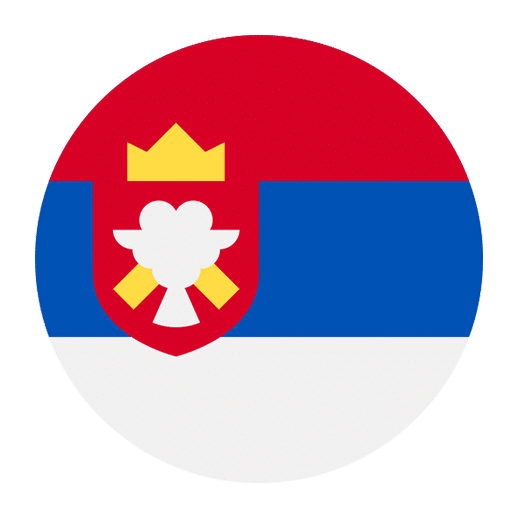Learning a new language can be both exciting and challenging, especially when you encounter words that look and sound similar but have different meanings. This is a common phenomenon in many languages, including Serbian. In this article, we will delve into the intriguing comparison between two Serbian words: hrana and hrane. Though they appear similar, they carry different meanings and are used in different contexts. Understanding the distinction between these words can help improve your Serbian vocabulary and enhance your language skills.
Understanding Hrana
Let’s start with the word hrana. In Serbian, hrana means “food.” It is a noun and is used to refer to any kind of food, whether it’s a meal, a snack, or ingredients for cooking. Here are a few examples to illustrate its usage:
1. **General Reference to Food:**
– Serbian: Volim srpsku hranu.
– English: I love Serbian food.
2. **Specific Type of Food:**
– Serbian: Ovo je zdrava hrana.
– English: This is healthy food.
3. **Food in a Meal Context:**
– Serbian: Jesmo li spremni za hranu?
– English: Are we ready for food?
As you can see, hrana is a straightforward noun that you can use whenever you want to talk about food in general or specific types of food.
Understanding Hrane
Now let’s look at hrane. The word hrane is a bit more complex because it can serve different grammatical functions depending on the context. Primarily, hrane is the third person plural form of the verb hraniti, which means “to feed.” Here are some examples to clarify this:
1. **Feeding Animals:**
– Serbian: Oni hrane svoje kućne ljubimce.
– English: They feed their pets.
2. **Feeding People:**
– Serbian: Roditelji hrane svoju decu.
– English: Parents feed their children.
3. **Metaphorical Feeding:**
– Serbian: Oni hrane svoju dušu muzikom.
– English: They feed their soul with music.
Additionally, hrane can also function as the genitive singular form of the noun hrana. This is used to express possession, quantity, or absence. For example:
1. **Quantity:**
– Serbian: Treba mi malo hrane.
– English: I need a little bit of food.
2. **Absence:**
– Serbian: Nemamo dovoljno hrane.
– English: We don’t have enough food.
3. **Possession:**
– Serbian: Kvalitet hrane je važan.
– English: The quality of the food is important.
Contextual Usage and Nuances
Understanding the context in which to use hrana and hrane is crucial for mastering Serbian. Here are some additional points to consider:
1. **Contextual Clues:**
– When you see hrana in a sentence, it’s usually straightforward as it refers to “food.”
– When you see hrane, look at the surrounding words to determine if it’s being used as a verb (to feed) or in the genitive case (of food).
2. **Verb Conjugation:**
– Remember that hrane is the third person plural form of the verb hraniti. Knowing verb conjugations can help you identify when hrane is being used as a verb.
3. **Genitive Case:**
– The genitive case in Serbian often indicates possession, quantity, or absence. When you see hrane used in this way, it’s usually referring to “of food.”
Common Mistakes and How to Avoid Them
Even seasoned language learners can sometimes mix up similar words. Here are some common mistakes people make with hrana and hrane, and tips on how to avoid them:
1. **Mixing Noun and Verb Forms:**
– Mistake: Oni volim hrane.
– Correction: Oni vole hranu.
– Tip: Make sure to use the noun form hrana when talking about food in general.
2. **Incorrect Use of Genitive Case:**
– Mistake: Treba mi malo hrana.
– Correction: Treba mi malo hrane.
– Tip: Use the genitive form hrane when talking about quantity or absence.
3. **Confusion in Verb Conjugation:**
– Mistake: Oni hrana svoje kućne ljubimce.
– Correction: Oni hrane svoje kućne ljubimce.
– Tip: Familiarize yourself with verb conjugations to use the correct form.
Practical Exercises
To reinforce your understanding of hrana and hrane, here are some practical exercises you can try:
1. **Sentence Translation:**
– Translate the following sentences from English to Serbian:
1. “They feed the birds every morning.”
2. “We need more food for the party.”
3. “The quality of food is very important.”
2. **Fill in the Blanks:**
– Complete the following sentences with the correct form of hrana or hrane:
1. Nemamo dovoljno _______.
2. Oni _______ svoje bebe.
3. Volim italijansku _______.
3. **Conjugation Practice:**
– Conjugate the verb hraniti in all forms (singular and plural) in the present tense.
Conclusion
Understanding the difference between hrana and hrane is an essential step in mastering Serbian. While hrana straightforwardly means “food,” hrane can function as both a verb (they feed) and in the genitive case (of food). Paying close attention to the context and familiarizing yourself with verb conjugations and grammatical cases will help you use these words correctly. Happy learning, and enjoy exploring the rich and nuanced Serbian language!

